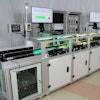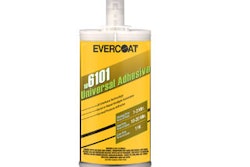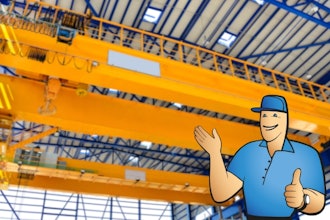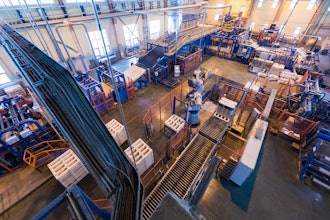This article first appeared in IMPO's September 2012 issue.
Equipment plays an essential role in modern food production, and an effective and reliable cleaning regime is integral to maintaining optimum equipment function. Just as processing equipment continues to become more automated, so do the methods responsible for cleaning it.
In the past, cleaning crews have been responsible for dismounting and disassembling equipment before scrubbing machines down with sanitizing chemicals — a process known as clean out of place (COP). But today more advanced cleaning options are becoming available, making equipment sanitization easier and safer.
How CIP Works
Clean-in-place (CIP) systems are gaining ground in food facilities due to their ability to wash equipment safely with repeatable results. In simplest terms, CIP systems work by using existing pump systems to introduce a controlled amount of cleaning fluid into the equipment. CIP systems are commonly designed to clean using automated cycles, which normally include a pre-rinse, a caustic or acidic chemical wash, and a post-rinse, depending on the application.
Dana Johnson, brewery and produce specialist for Birko, says that a food company’s size will impact the CIP method used in the facility. “Smaller food and beverage companies will simply add water and chemicals into a vessel that needs to be cleaned, re-circulate the cleaning chemicals and sanitizer through the spray nozzle with a pump, and then discard the solution when finished.”
In contrast, Johnson says larger food companies often employ more advanced CIP systems, which dose chemicals in the proper concentration to their respective tanks. The tanks most often are hard-piped to the equipment that needs to be cleaned. In such cases, there are often two tanks: one for “clean” caustic and one for slightly used caustic that is designed for what Johnson calls “sacrificial cleaning.” The first round of caustic removes contaminants — including bacteria and various buildups — from the equipment before being discarded. The equipment is then washed again with clean caustic. The second round of caustic is usually relatively clean and is generally recycled to a “dirty” caustic reservoir to be reused.
When implementing a new CIP system, it is crucial for companies to determine the effectiveness of the process and make any necessary adjustments. Plant operators should review factors such as the size of the vessel being cleaned, size and location of cleaning entry, possible internal obstructions, drain size, and existing pressure and flow capabilities of CIP pumps.
Johnson says one important method of determining the effectiveness of a CIP system is adenosine triphosphate (ATP) testing, which is used to test final rinse water to establish whether any remaining contaminants are present. If contaminants are detected in the final rinse water, the vessel or lines probably need to be re-cleaned.
Benefits Of CIP
The most evident benefit of CIP equipment is that the process is automated, says Drew Delaney, Executive Vice President of Gamajet Cleaning Systems, Inc. “Automating the cleaning process provides repeatable, reliable cleaning results.”
Removing the need for manual cleaning also enhances employee safety, says Robert Delaney, Chairman of Gamajet. “Confined space entry into the vessels is eliminated, thereby improving employee safety.”
Equipment that cannot easily be cleaned by hand can be accommodated through CIP methods. Johnson says line hoses and fillers are often designed as CIP, as they cannot effectively be soaked or scrubbed manually.
In addition to increasing maintenance efficiency and plant safety, CIP equipment also can help manufacturers meet sustainability initiatives, as it often requires less water than foaming and rinsing methods. “In regards to the CIP process, the focus is to use less water, time, chemicals, and energy to clean the process equipment,” Drew Delaney says.
Items To Consider
Food processors looking to bring CIP equipment into their facilities should consider all possible risks, Johnson says. Often 180°F caustic solution, which can be hazardous to employees if a line bursts or a spill occurs, is used during CIP processes.
Biofilm, or bacteria clusters, can sometimes build up in vessels, tanks and lines, which can “lead to shelf-life issues and, in some cases, a health threat to the consumer, depending on the kind of food or beverage being produced,” Johnson says.
In general, the benefits of CIP outweigh the risks, Drew Delaney says. “In many cases, the alternative to CIP is much more dangerous. Manual cleaning can place personnel in a dangerous environment during the cleaning process.”
Once a company decides to incorporate CIP into its plant, the possibilities are virtually endless, Drew Delaney says. “Any tank or vessel where product is mixed or stored is a viable application for CIP.”























